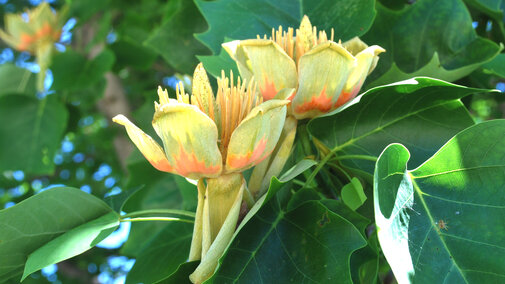Liriodendron tulipifera
,
Deciduous
As can be guessed by both its common and scientific names, tulip
tree is named for its tulip-like, yellow-green flowers that are born at the end of branches shortly after leaf emergence each
spring.

Where To Grow
The tree has proven to be hardy and fast growing in eastern Nebraska, with many specimens more than 70 years old and some reaching over
80 feet tall. Tulip poplar can be exacting in soil and moisture requirements. It does best on moderately moist, deep, well drained,
loose textured soils; it rarely grows well in very dry or very wet situations.
Suitable to plant east of the 100th meridian.
Size at Maturity
Tree Height
Tree Spread
50-60'
40-50'
Wildlife Benefits
This species has some wildlife value. The fruits provide food for squirrels in the late fall and winter months, and the white-tailed deer
often browse on the twigs.
Additional Considerations
This tree does not have serious insect or disease problems. However, large aphid infestations can provide the conditions for sooty mold.
Interesting Facts
Some refer to this tree as the Tulip poplar; however, it actually is not a poplar but a member of the magnolia family.

